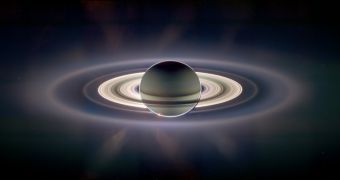NASA announced, in a recent statement, that the Cassini mission was extended by at least two years, in order to conduct more detailed studies of Saturn's exotic moons. The Cassini spacecraft along with the Huygens probe was launched into space in October 1997 and arrived at the Saturnian system in June 2004. Its original mission was scheduled to span over a period of four years, meaning that it will officially end in the month of July this year.
"This extension is not only exciting for the science community, but for the world to continue to share in unlocking Saturn's secrets. New discoveries are the hallmarks of its success, along with the breathtaking images beamed back to Earth that are simply mesmerizing," said Jim Green, Planetary Science Division director at NASA.
Along with Enceladus, Saturn's moon Titan is by far one of the most intriguing moons in the solar system. Its surface is covered by high amounts of natural gas and other organic substances, while Enceladus is believed to hide a liquid water ocean under its icy surface. During its two additional years of operation, Titan alone will receive 26 visits from Cassini.
The latest encounter between Cassini and Enceladus took place only a few weeks ago, when the probe executed a fly-by at a distance of only 52 kilometers above the surface of the moon. The next fly-by, scheduled to take place this summer, will be even closer, with Cassini flying at a distance of 24 kilometers from surface.
NASA researchers believe that, by studying these two particular moons, we may be able to create a picture of how the Earth looked like just before life appeared. "When we designed the original tour, we really did not know what we would find, especially at Enceladus and Titan. This extended tour is responding to these new discoveries and giving us a change to look for more," said Cassini project scientists at the Jet Propulsion Laboratory, Dennis Matson.
"The spacecraft is performing exceptionally well and the team is highly motivated, so we're excited at the prospect of another two years," said Cassini program manager at JPL, Bob Mitchel.
In its four-year mission, Cassini made 62 revolutions around Saturn, 50 fly-bys around its moon, and relayed about 140,000 images of the Saturnian system. The cost of the mission extension has mounted to 160 million US dollars, and was paid by NASA, although Cassini is a collaboration between NASA, the ESA and the Italian Space Agency. The total cost of the mission was 3.27 billion dollars; NASA contributed with 2.6 billions.

 14 DAY TRIAL //
14 DAY TRIAL //